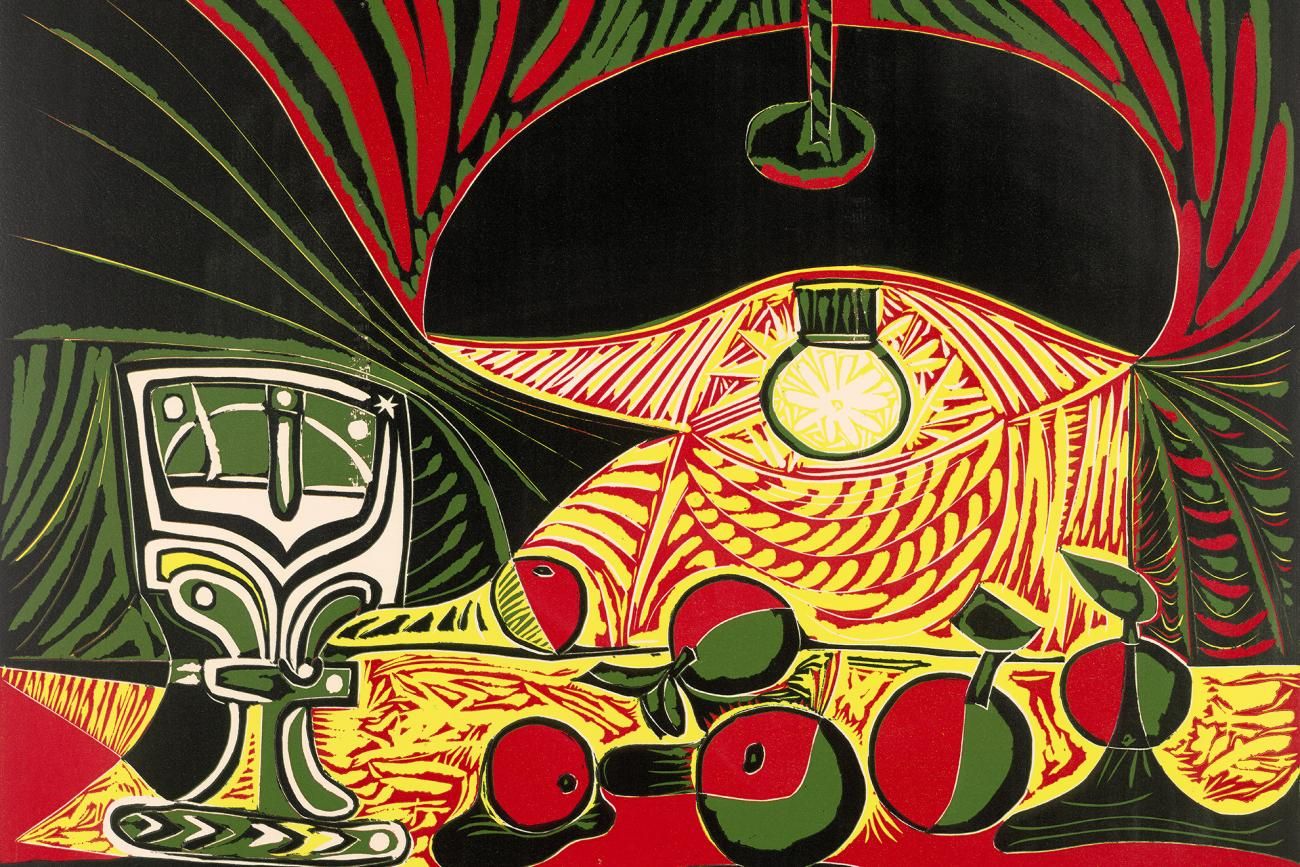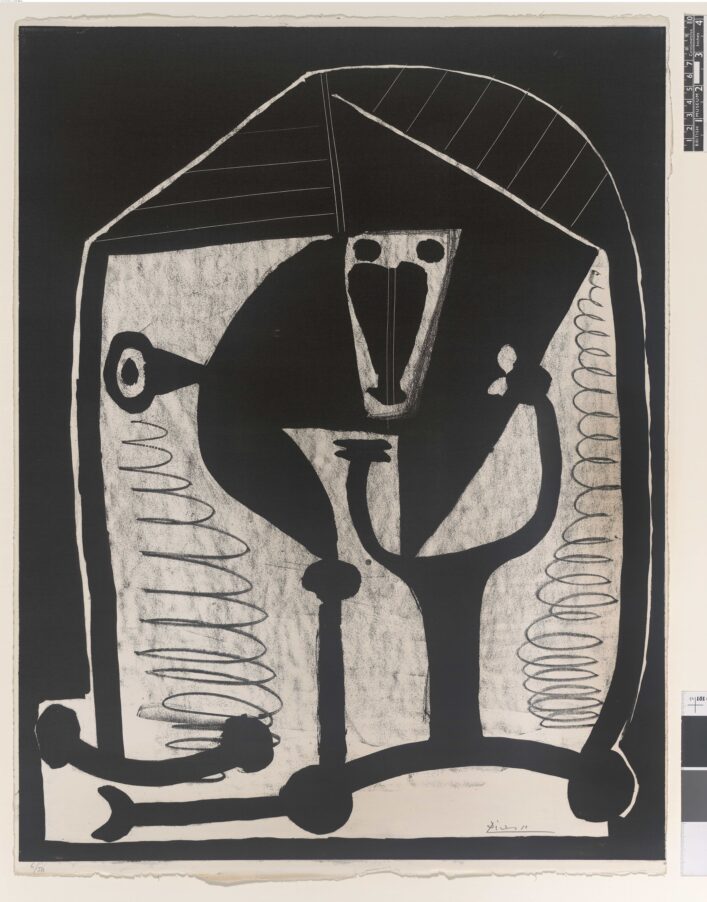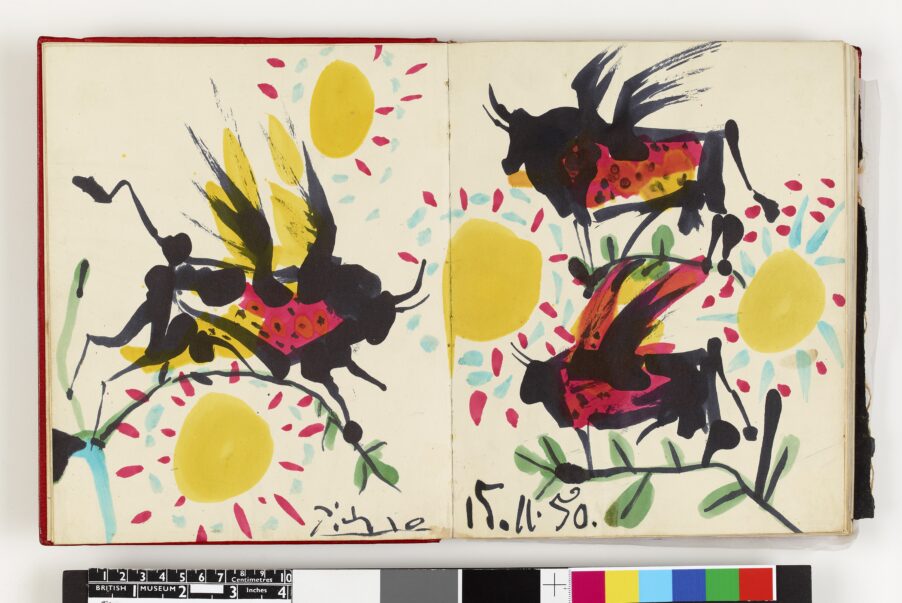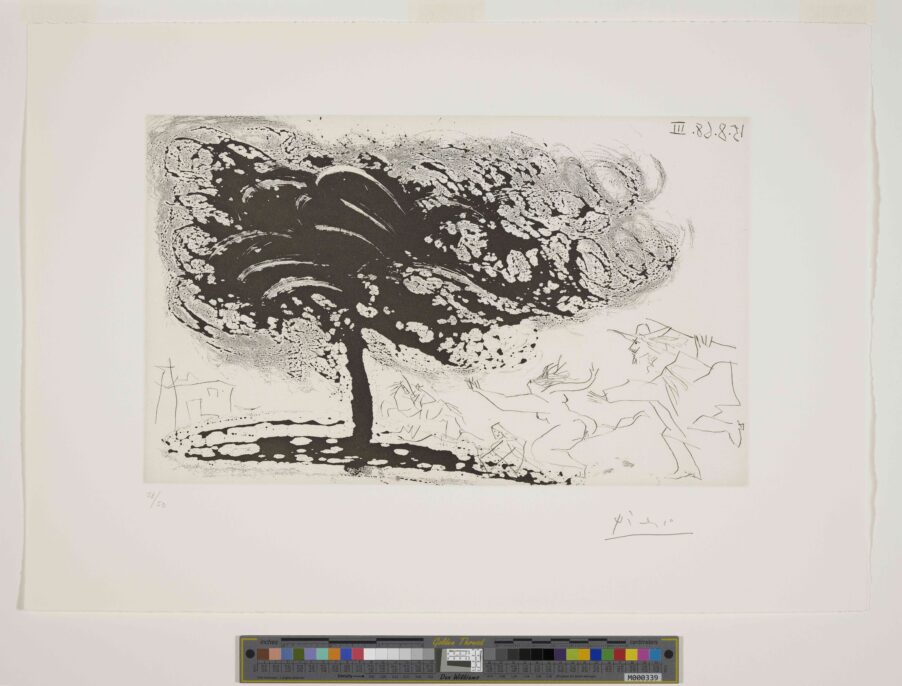Until 30 March 2025, in Room 90, on the third floor, in the British Museum’s Graphics Wing, you can see a remarkable exhibition, which has been installed in one room, but is worth hours of exploring. Here you will learn things you didn’t know about the genius of Cubism and one of the world’s most expensive artists, Pablo Picasso.
One side of a multifaceted genius: the exhibition ‘Picasso: Printmaker’ at the British Museum
The exhibition is called ‘Picasso: printmaker’ and here is what is bound to surprise you on a visit. The first thing is that Picasso was working as a printmaker throughout his whole life, experimenting in this field and being remarkably prolific in revealing this side of his multifaceted nature. The second surprising thing is that the British Museum has a huge collection of etchings and lithographs of the master, which were systematically being purchased during the 20th and 21st centuries up until now. And the third thing is that Picasso was captivated by literature, and it was its characters that often inspired his etchings and lithographs. There are many so-called ‘livres d’artiste’ on the current book market, where Pablo Picasso illustrated novels and poetry. The exhibition includes, for example, his etching for Honoré de Balzac’s ‘The Unknown Masterpiece’ (an artist’s book published by the Vollard publishing house in 1931).
On display at the British Museum are over 100 works by Picasso, including the etchings from the unique ‘347 Suite’ that have never been exhibited before. ‘347 Suite’ is a series of 347 etchings that Picasso created in several months in 1968, when he was 86 years old, with these 347 etchings (an astounding number) being full of beauty and explicit eroticism, and executed in aquatint, engraving and drypoint techniques. The Belgian printmakers Piero and Aldo Crommelynck, who brought a special machine from Paris to Picasso’s studio in Cannes, helped him with the technical side of printing the ‘347 Suite’. This being the end of the exhibition, it presents the master’s prints in chronological order.
The exhibition is curated in a very comprehensible way – one row of plates with consecutive numbering tells us about Picasso’s work on prints, while in parallel in the centre of the hall there are posters with the general context of his life and time, including his move to Paris, meetings with different female muses and wives. It is done unobtrusively but in a meaningful way, to remind us of some facts of his biography.
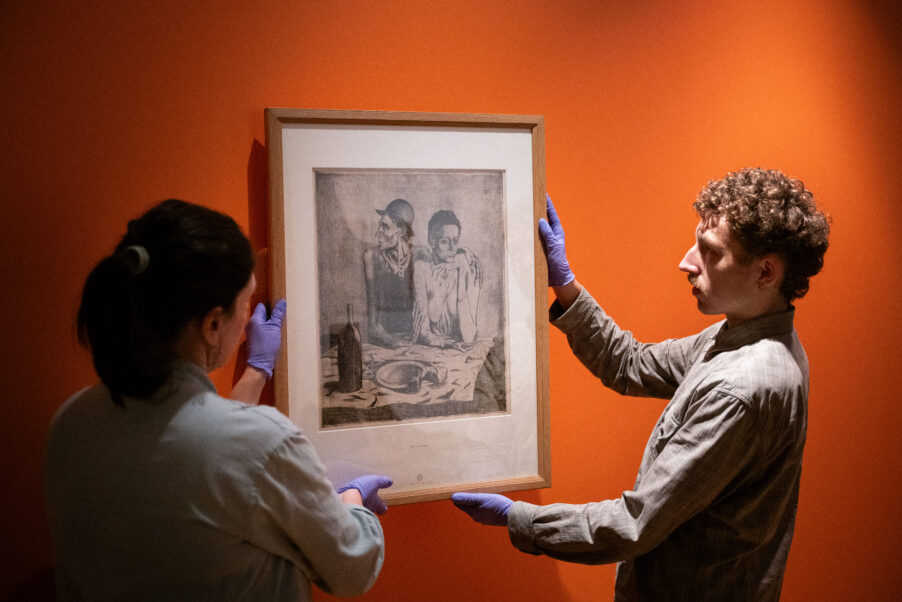
The exhibition opens with the etching ‘The frugal meal’, made in 1904 by the 23-year-old Picasso when he had just moved to Paris. It is known to be the first of the prints made by the master. The etchings sold well in Paris of that time, and Picasso was motivated to create them by his Paris art dealer and publisher Ambroise Vollard. Among the early etchings is the mind-turning ‘Salome,’ in drypoint technique, where a nude Salome throws up her leg unrealistically high, as if launching herself into the flight. Several works from famous Vollard Suite (1930-37) are also on show – these 100 works are done in drypoint, sugar aquatint and engraving were donated to the British Museum by Hamish Parker in 2011. Almost half of the suite reflects Picasso’s fascination with sculpture. The female muse of these prints is Picasso’s lover of the time Marie-Thérèse Walter.
It is important for the exhibition to trace Picasso’s relationships with women, as they are reflected in his prints. Thus, here you can see ‘Head of a woman No. 7. Portrait of Dora Maar’ (1939), “Figure” (1948), which is a black-and-white lithograph depicting Françoise Gilot, which was acquired by the British Museum along with other post-war works by Picasso in 2016. There is also a colour crayon transfer lithograph, ‘The little artist’ (1954), which depicts Gilot and her two children with Picasso, Claude and Paloma. Picasso was also very fond of animals – and apart from the mythological Minotaur from ‘Vollard Suite’ and a bull from an engraving depicting a corrida (one of the rare sketching works among Picasso’s prints), one can also see here works in drypoint and aquatint techniques, depicting a monkey (‘Monkey’, 1936), frogs, a lizard, owls, a goat, a pigeon and a chicken. One can draw parallels with Leonardo da Vinci here, in whose graphic heritage one can also see dogs, horses and cows drawn in detail, as an ever-observant artist is interested in everything in the world.
And the last thing you should definitely pay attention to at this exhibition is the experimental and eye-catching (you just can’t look away) linocuts by Pablo Picasso. By the way, there is a separate stand at the exhibition, telling about the peculiarities of all printing techniques used by the Catalan master – don’t miss it, as it’s very informative. In order to create a linocut it was necessary to cut linoleum into pieces and create an image by cutting off the negative parts of the future print, as the ink (often coloured) would then be left on the remaining pieces. Picasso’s fascination with linocuts lasted for a long time, from the 1950s to 1962.
It is impossible to look away from the resulting works – especially the four prints of ‘Still life under the lamp’ (1962), these four different coloured versions having been acquired by the British Museum in 2013. We can see here that to create the four-colour linocut, Picasso cut off the pieces from the previous version to open up areas for new colour, gradually layering the colours one on top of the other. The result is simply amazing and unparalleled in printmaking. Be sure to visit this exhibition to be personally amazed by the painstaking, prolific, curious and subtle mastery of the master of printmaking, and to discover the side of Pablo Picasso’s genius you have never known before.

